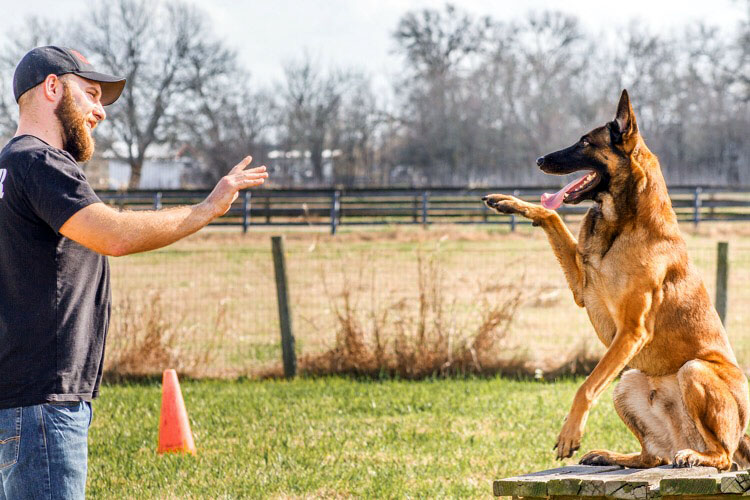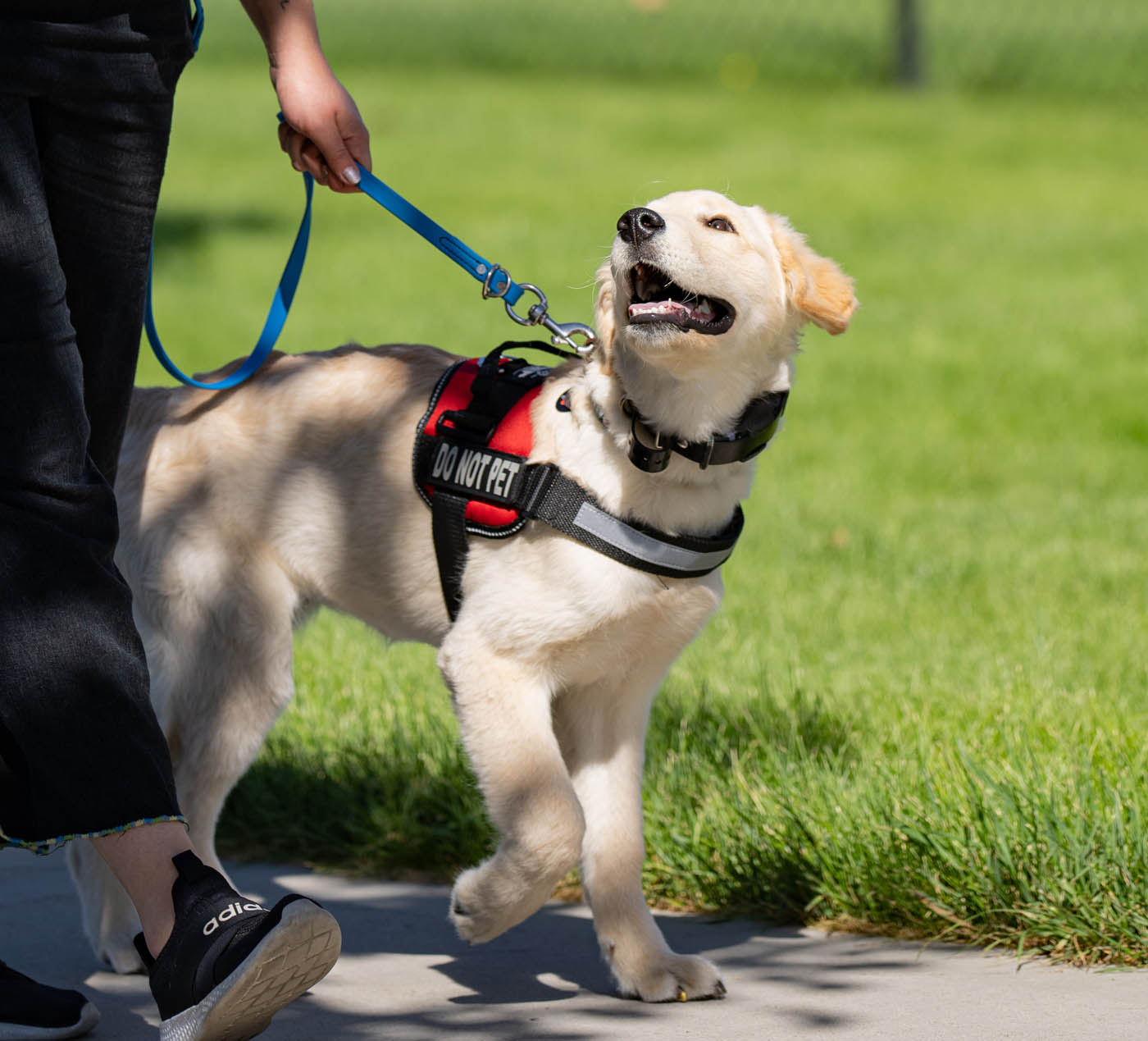Comprehensive puppy Training programs for a happy dog.
Comprehensive puppy Training programs for a happy dog.
Blog Article
Top Dog Training Tips for a Mannerly Friend
Educating your canine to be a well-behaved buddy calls for a nuanced understanding of canine habits and the application of effective techniques. The journey to a genteel family pet includes even more than simply these basics; it requires a much deeper exploration of methods that can change your training approach.
Understanding Dog Habits
Comprehending canine actions is crucial for effective dog training and promoting an unified connection in between canines and their proprietors. Pet dogs are complicated creatures, displaying a large range of habits affected by genes, environment, and socializing. Identifying the underlying motivations for a pet dog's actions-- such as anxiety, excitement, or territorial reactions-- can substantially improve training performance.
Observing body movement is a critical aspect of understanding canine habits. Tail placement, ear positioning, and posture can give useful understandings right into a dog's mood. A wagging tail does not always suggest happiness; it can likewise indicate anxiety or anxiousness. Social interactions with other canines and people play an essential function in forming habits. Pet dogs that experience favorable socialization are generally a lot more versatile and genteel.

Crucial Educating Commands
Understanding vital training commands is essential for establishing efficient communication between dogs and their owners. These commands function as the structure for a well-behaved pet and can dramatically boost the general relationship between pet dog and owner.
Trick commands include "Sit," "Stay," "Come," "Down," and "Heel." The command "Sit" is commonly the initial taught, as it encourages peace and focus. "Remain" strengthens a dog's capability to continue to be in one placement, promoting self-discipline. "Come" is crucial for security, guaranteeing that your canine returns to you when called. "Down" advises your canine to rest, which can help in handling ecstatic habits. Dog training near me. "Heel" teaches your pet to stroll together with you, fostering better leash good manners.
Exercising these commands in different atmospheres helps canines generalise their training and respond suitably, regardless of disturbances. By investing time in teaching these important commands, owners can cultivate a harmonious and considerate relationship with their canine companions, improving both security and satisfaction in day-to-day communications.
Positive Reinforcement Methods
Positive reinforcement methods are crucial techniques in canine training that concentrate on rewarding preferred habits to motivate their reoccurrence. This approach leverages the natural understanding procedures of dogs, enabling them to link details activities with favorable outcomes. By utilizing treats, praise, or playtime as Learn More Here rewards, instructors can effectively encourage pet dogs to repeat the habits they intend to strengthen.
To execute favorable support, it is essential to deliver rewards instantly after the preferred actions happens. This assists the dog make a clear link in between their action and the reward. Uniformity is additionally crucial; rewards need to be offered whenever the desired behavior is exhibited throughout the initial training stage, slowly transitioning to a variable timetable as the actions comes to be extra dependable.
Furthermore, picking the appropriate kind of incentive is vital. While treats are commonly effective, some dogs might react much better to spoken praise or interactive play. Understanding your dog's preferences can improve the training experience. Inevitably, favorable reinforcement fosters a relying on connection in between the pet dog and proprietor, making training a more satisfying and reliable procedure that builds a well-behaved companion.

Socialization Strategies
Effective socialization strategies are important for a pet's development, as they help establish a well-shaped and certain companion. Early direct exposure to various environments, people, and other animals is vital to prevent behavior concerns in the adult years. Begin this procedure throughout the important socialization period, which typically happens between 3 and fourteen weeks old.
Present your pup to diverse stimulations, such as various surface areas, seems, and browse around this site smells. Managed encounters with various other pets and pleasant human beings can cultivate favorable associations. Puppy classes are an excellent source, providing organized environments for social interaction and finding out standard commands.
Slowly boost the complexity of socialization experiences. Take your pet dog to parks, pet-friendly stores, and public events, making sure each experience is favorable. Observe your pet dog's reactions and remove them from overwhelming scenarios to stay clear of fear-based actions.
Make use of favorable support to compensate tranquil and confident behavior during social communications. This can include deals with, praise, or playtime. Keep in mind, persistence is vital; each pet has its very own rate for getting used to brand-new experiences. By applying these socializing strategies, you prepared for a well-adjusted and sociable canine buddy.
Uniformity and Regular
Developing uniformity and regimen in pet dog training is essential for promoting a feeling of security and understanding in your pet. Canines thrive on predictability; recognizing what to anticipate aids them feel secure and decreases stress and anxiety.
Incorporating an organized regimen into your training sessions also enhances your canine's learning experience - Dog training near me. Arrange day-to-day training sessions at the same time daily, making certain that both you and your pet dog are emotionally ready. Short, constant training sessions are a lot more reliable than long, seldom ones; objective for 5 to 10 minutes of focused training several times a day
Incorporate training into everyday tasks-- compensate your canine for resting before meals or strolling calmly on a leash. In general, a consistent technique, paired with a structured routine, lays the structure for a click this well-behaved buddy, promoting a harmonious connection in between you and your canine.
Verdict
Finally, effective pet dog training counts on comprehending canine habits and carrying out important commands such as "Sit," "Remain," and "Come." Positive reinforcement techniques offer to motivate desired behaviors, while very early socializing prepares pet dogs for varied settings. Developing uniformity and a regular fosters predictability, which adds to a well-behaved buddy. By stressing these crucial components, the bond in between proprietor and dog strengthens, eventually resulting in a harmonious and fulfilling partnership.
Report this page